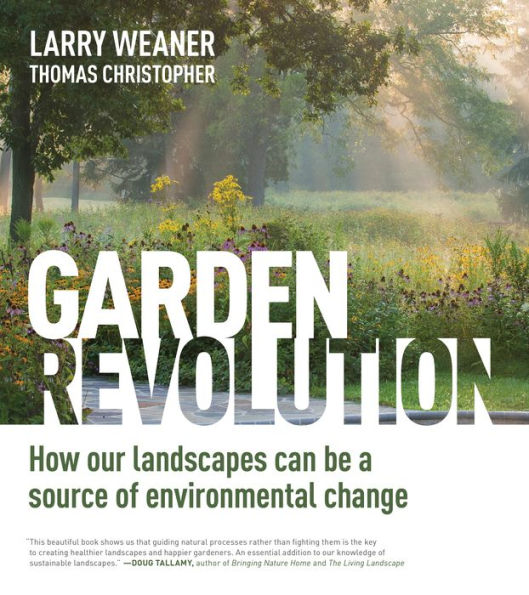Read an Excerpt
Ecological Gardening
An Introduction
I have been profoundly influenced by the activists who, since the publication of Rachel Carson’s Silent Spring (and in some cases even before that), have been working to reverse the harmful habits into which much of gardening had fallen. There are powerful environmental reasons for bringing our gardens into a sounder relationship with nature. However, I am not hoping to convert readers by teaching them that this kind of gardening is morally or environmentally the right thing to do. Instead, I honestly believe that having once sampled an ecologically driven approach, gardeners won’t want to do anything else. For me, the most persuasive reasons are that it’s easier and far more rewarding to transform the human landscape in this fashion.
Through my many years of experience, I have learned to treasure the subtle and unpredictable beauties of a garden that collaborates with the local ecology. I prefer to work with a landscape that, at least in part, evolves over time according to natural processes of change and plants itself. I find the diversity of an evolving garden’s plant and animal residents fascinating, and the way in which the landscape or garden recruits new inhabitants as it evolves is one of its most satisfying and richest aspects.
A large part of what I advocate is the shedding of conventional gardening’s counter-productive practices. The ways in which gardeners till and weed, irrigate, and fertilize their plots, for example, cause perpetual disturbance to the ecologies of those areas and create an irresistible invitation to invasive species. And the ways we were taught to combat those invaders ensure that the struggle will never end. Unfortunately, though perhaps not surprisingly, many of these counter-productive practices have been perpetuated by the more recent schools of “natural gardening” that, though they have an admirable emphasis on the use of native species, still commonly arrange and maintain plantings in a conventional way.
These impediments can best be corrected by a return to first principles, by studying how plants and wildlife associate in a natural state and basing our gardening on that. My experiences have taught me that this change of behavior brings not only better results—a healthier, more dynamic landscape—but also one that demands far fewer inputs. I am selfish enough to have found the latter a powerful motivation to change, and I suspect readers will react similarly.
In this alternative approach, less is truly more. Minimizing intervention and letting the indigenous vegetation dictate plant selection and, as much as possible, do the planting, produces a garden landscape that flourishes without the traditional injections of irrigation and fertilizers and is better able to cope on its own with weeds and pests. The gardener’s input becomes a matter of directing the garden ecosystem’s evolution into desirable paths and capitalizing on positive developments as they occur. This more fluid style of gardening frees the owner from the drudgery inherent in the traditional attempt to keep the landscape fixed according to some artificial blueprint.
At the same time, this kind of gardening fulfills many of the goals promoted by the environmental activists. It turns the landscape from a consumer of resources and a polluter into a source of environmental renewal: a nexus of stormwater absorption and purification, a sanctuary for indigenous wildlife, and a protector of biodiversity. These are all important, even essential. What I relish most, though, and what I believe will speak most powerfully to readers is the unique beauty and rich experience that this ecologically based style of gardening produces.
For all of those galvanized by the message of such environmental gardening manifestos as Sara Stein’s Noah’s Garden and Doug Tallamy’s Bringing Nature Home, this book is the next step, the way to turn philosophy into practice.















